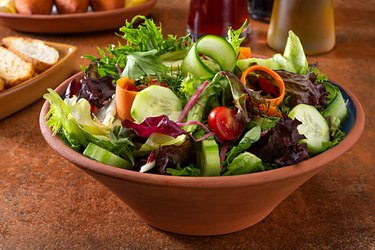There's an old saying that you can never be too rich or too good-looking. For gardeners, it's a much simpler equation: there's never enough room to grow everything you'd like. Of course, some of us struggle with smaller spaces than others. In those cases, it's important to focus on a few carefully-selected vegetables that are unusually productive, or provide excellent bang for the buck (or quality!) compared with store-bought. Here are five of the best vegetables for small gardens, and a few tips for growing them effectively.
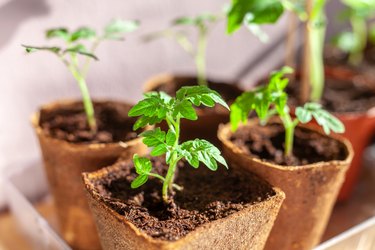
Video of the Day
1. Summer Squash
Squashes are among the most prolific plants you can grow, which is why people joke about locking their car windows during zucchini season. It only takes one or two plants to feed a small family all summer long, which makes them perfect for small spaces. Left to themselves they'll sprawl everywhere, so you'll need to train them up a trellis or in a sturdy tomato cage. Fun fact: the plant's tender young leaves can be steamed or sauteed and eaten as greens, and the blossoms can be sauteed, deep-fried or stuffed and baked. That's a lot of versatility from one plant.
Video of the Day
Read Next: How to Make a Garden Trellis
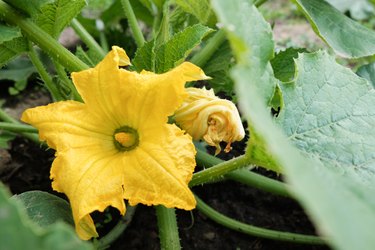
2. Tomatoes
You don't need a lot of space for tomatoes - they're quite happy in a pot or planter, if necessary - and each plant is highly productive. One vine of big slicing tomatoes and another one or two of the Italian-style "paste" tomatoes (for sauces, or dried tomatoes) will take care of most small households' needs. As with squash, you'll want to train them up a trellis or use a sturdy cage to support the branches as they fill with fruit. You can also double down on tomatoes by planting a cherry tomato in a hanging basket (Tumbling Tom is a good choice) and suspending that above your other plants.
Read Next: How to Grow Tumbler Tomatoes
Tip
Tomatoes come in "determinate" varieties, which set fruit all at once, and "indeterminate" varieties that will produce until the frost kills them. Choose determinate varieties if you're in a short-season climate, and indeterminate varieties if you're in a long-season climate.
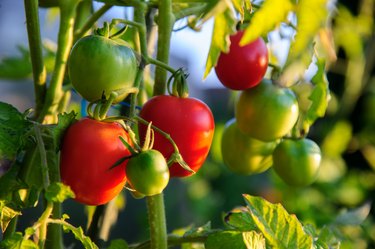
3. Pole Beans
Beans are a great small-spaces crop: they grow vertically by nature, they help fertilize the soil for next year's plants, and you can harvest them from early summer right through until the first hard frosts. Pole beans grow very tall, often 8 feet or more, and need support: you can build an obelisk-style frame for them, grow them on poles the old-school way (hence the name) or even train them up a convenient fence if there's one in the right spot. Choose from traditional green and yellow cultivars, or exotic purples, or a mix of several kinds. They'll keep growing as long as you keep picking them, or you can let them mature and ripen at the end of the season and then shuck and dry them for winter storage.
Read Next: How to Prepare Pole Beans
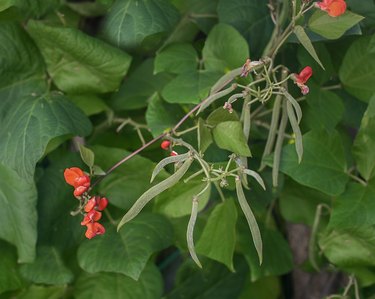
4. Salad Greens
Lettuces and other salad greens are perfect for small-scale gardens, once you get past the idea of harvesting a whole head at a time. If you grow leafy types, and harvest the outer leaves a few at a time as they grow ("cut and come again"), you can enjoy fresh salads all summer long with just 6 to 10 heads actively producing at a given time. Grow a mix of lettuces in different shapes and colors for a pleasing variety, or add in a few alternative greens - arugula, mizuna, cresses, curly endive - for different flavors and textures (you can cheat and just buy a commercial mesclun seed mix, which is much the same thing).
Tip
Lettuces prefer cool weather, so they benefit from some shade during midsummer afternoons. Otherwise they'll "bolt," or go to seed, which makes them bitter and unpalatable. To have a harvest all summer long, choose bolt-resistant varieties and plant them every few weeks.
Read Next: How to Build and Grow a Salad Garden on Your Balcony
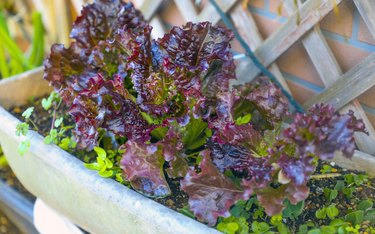
5. Cucumbers
Like zucchini and tomatoes, cucumbers grow vigorously enough that you'll only need a vine or two to feed most households. Also like tomatoes and zucchini, they'll need a sturdy trellis or cage to support them as the cukes fill out. Harvest them young and small for pickling, or as "baby cukes" for the kids' lunchboxes. Slice full-sized cucumbers into your salads and wraps (along with your lettuce and tomatoes), serve them on veggie trays with dips, sprinkle sliced cukes with a good white wine vinegar as a palate-cleanser between courses of a larger meal, or shred them to make tzatziki for your backyard get-togethers. They're a perfectly cool, refreshing midsummer treat.
Read Next: How to Preserve Cucumbers
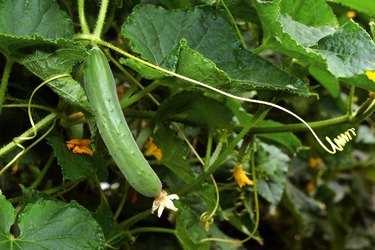
Honorable Mentions (and a Few Tips)
Part of the fun of gardening is that you get to grow the things you like to eat, so feel free to expand on our list with a few choices of your own. We could have made an equally good case for a number of other options, including:
- Greens like spinach, chard and kale: They can be used in salads when young and tender, or cooked when larger and mature. Harvested in "cut and come again" style, just a few plants will feed you throughout the gardening season.
- Peppers: Every bit as prolific as tomatoes, though a bit more partial to warm weather. Plant sweet or hot varieties or both, and harvest them green or fully ripened.
- Beets: Beets are a "two-fer," because you can enjoy their tasty greens all summer and then harvest the roots in autumn.
- Herbs: You can tuck fresh herbs like basil, oregano, dill, cilantro, sage, parsley, chives or thyme in between your other plants, or in small pots of their own. They're packed with micronutrients and flavor, and they're relatively expensive at the supermarket. That makes growing your own a great value.
If you really want to maximize your space, consider succession planting and interplanting. Succession planting simply means starting with cold-weather spring vegetables like peas, radishes or spinach, then giving way to summer vegetables (chard, beans) and autumn vegetables (kale, carrots) as the seasons progress. It can also mean planting early-, mid- and late-season varieties of the same plants for a continuous harvest.
Interplanting means mixing smaller and larger plants in a way that makes sense: planting basil under your tomatoes, for example, or using a bushy zucchini or cucumber to give your heat-sensitive lettuces some afternoon shade. The bottom line is more food from the same space, and that's a solid win for any gardener.
